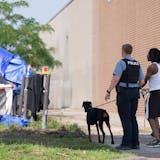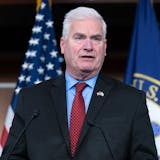The government's public service-loan forgiveness program was created with a simple premise: Take a job to help the greater good and get some debt relief down the road.
It hasn't been that easy. A confusing set of rules and servicers who provided misleading information left many people denied forgiveness.
"This is one of those well-intentioned programs that has made millions of people's heads spin," said Rohit Chopra, a federal trade commissioner.
The program was designed to encourage people to take jobs in teaching, social work or other positions that typically require higher education but pay modest wages.
To avoid financially crippling these workers, the government would forgive the balance of certain federal student loans after they worked full time for at least 10 years for a government or not-for-profit organization and made 120 monthly payments.
The initial round of forgiveness was supposed to begin in the fall of 2017, but few people have made it through.
If you are trying to navigate this process, here's some help:
• To begin, educate yourself on the requirements: you need to have the right kind of loan, the right kind of job and right kind of repayment plan. Anything less than all of these and you'll be rejected.

